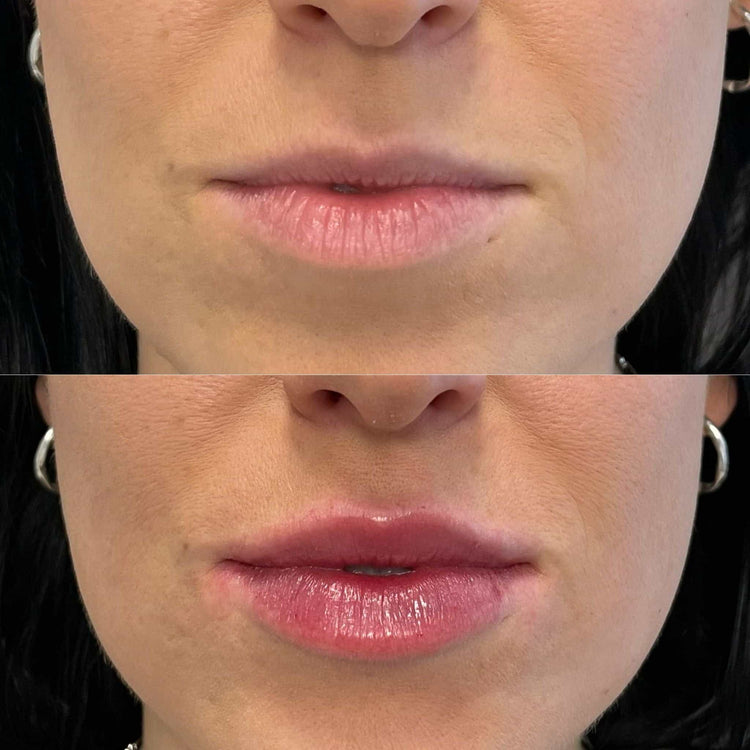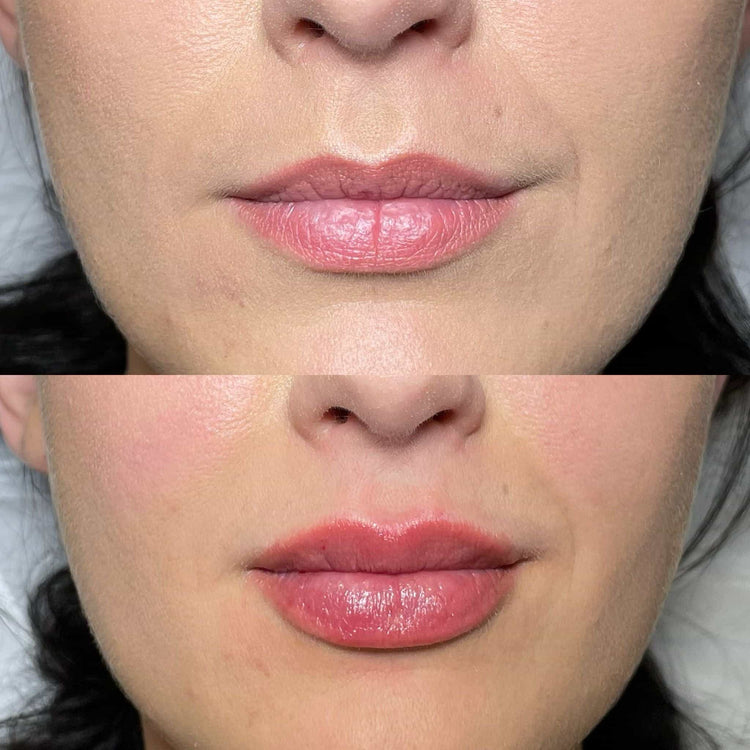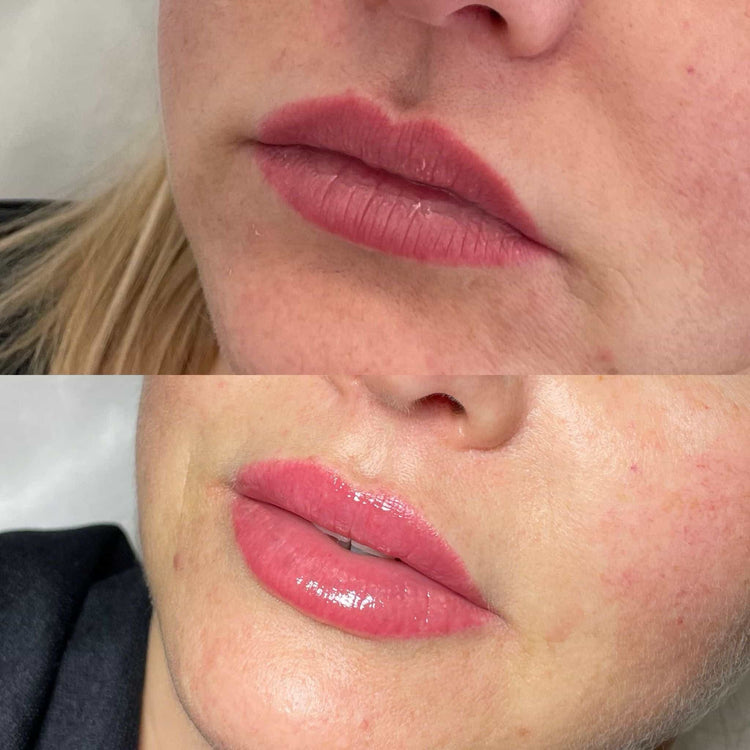Types of Lip Filler Injections
Lip fillers have become increasingly popular in recent years, offering a non-surgical way to enhance lip size, shape, and volume. There are several types of lip filler injections available, each with its own unique properties and benefits. Understanding the different options can help individuals make informed decisions about their desired outcome.
Hyaluronic Acid Fillers
Lip fillers have become increasingly popular in recent years, offering a non-surgical way to enhance lip size, shape, and volume. There are several types of lip filler injections available, each with its own unique properties and benefits. Understanding the different options can help individuals make informed decisions about their desired outcome.

- Hyaluronic Acid Fillers
Hyaluronic acid fillers are the most common type of lip filler used. They work by attracting and retaining water molecules, which plump up the lips and create a smoother appearance. Hyaluronic acid is a naturally occurring substance in the body, making it a safe and biocompatible option for lip augmentation.
Calcium Hydroxylapatite Fillers
Calcium hydroxylapatite fillers are another type of lip filler that can provide long-lasting results. Unlike hyaluronic acid fillers, which are derived from natural sources, calcium hydroxylapatite is a synthetic material made up of tiny calcium phosphate crystals suspended in a gel.
These fillers work by stimulating the body’s own collagen production, which helps to increase lip volume and provide a more youthful appearance. Calcium hydroxylapatite fillers tend to last longer than hyaluronic acid fillers, often lasting for up to 18 months or even longer.
The Pain Experience
The decision to undergo any cosmetic procedure, like lip fillers, involves weighing the potential benefits against the potential risks and discomfort. Understanding what to expect during the procedure can help alleviate anxiety and ensure a more positive experience.
Numbing Cream and Anesthesia
The pain experience associated with lip fillers varies from person to person and depends on factors such as individual pain tolerance, the type of filler used, and the amount injected. Many patients describe the sensation as a mild stinging or pinching, similar to a mosquito bite.
Numbing cream can be applied to the lips prior to the procedure to minimize discomfort. Anesthesia may also be used in some cases, particularly for larger injections or individuals with low pain tolerance.
Individual Pain Tolerance
The experience of pain during lip filler procedures varies greatly from person to person. Factors influencing this range include individual pain tolerance levels, the specific type of filler used, and the amount injected. Generally, patients report a sensation akin to a mild stinging or pinching, often compared to a mosquito bite.
To minimize discomfort, numbing creams are typically applied to the lips prior to injection. In some cases, especially for larger injections or individuals with lower pain tolerance, anesthesia may be employed.
Duration of Discomfort
The duration of discomfort experienced during and after lip filler injections varies considerably depending on individual factors. The majority of patients describe a sensation akin to mild stinging or pinching, similar to a mosquito bite.
Numbing creams are commonly used to minimize any pain associated with the procedure. In certain instances, particularly for larger injections or individuals with lower pain tolerance, anesthesia may be administered.
The post-injection discomfort generally subsides within a few hours. Some patients may experience mild swelling, redness, or bruising at the injection sites, which typically resolve within a week or two.
Managing Discomfort After Treatment
Managing discomfort after lip filler treatment is essential for a smooth recovery and positive experience. Understanding what to expect can help alleviate anxiety and ensure a more comfortable post-procedure journey.
Ice Packs and Cold Compresses

After lip filler injections, some patients may experience mild discomfort, such as swelling, redness, or bruising. These symptoms are usually temporary and resolve within a week or two.
- Applying ice packs or cold compresses to the treated area can help reduce swelling and inflammation.
- Over-the-counter pain relievers, such as ibuprofen or acetaminophen, can be used to manage any discomfort.
- It is important to avoid touching or rubbing the treated area, as this can irritate the skin and delay healing.
Over-the-Counter Pain Relief
Over-the-counter pain relievers, such as ibuprofen or acetaminophen, can be effective in managing discomfort following lip filler injections. Always follow the recommended dosage instructions on the medication label and consult with a healthcare professional if you have any concerns or pre-existing medical conditions.
It’s important to avoid touching or rubbing the treated area as this can irritate the skin and potentially delay healing.
Factors Affecting Pain Level
The pain level associated with lip fillers can vary significantly from person to person. Several factors influence the experience, including individual pain tolerance, the type of filler used, and the amount injected. Some people describe it as a mild stinging or pinching sensation, similar to a mosquito bite.
Injection Technique
The experience of pain during lip filler procedures varies greatly from person to person. Factors influencing this range include individual pain tolerance levels, the specific type of filler used, and the amount injected. Generally, patients report a sensation akin to a mild stinging or pinching, often compared to a mosquito bite.
To minimize discomfort, numbing creams are typically applied to the lips prior to injection. In some cases, especially for larger injections or individuals with lower pain tolerance, anesthesia may be employed.
The duration of discomfort experienced during and after lip filler injections varies considerably depending on individual factors. The majority of patients describe a sensation akin to mild stinging or pinching, similar to a mosquito bite.
Numbing creams are commonly used to minimize any pain associated with the procedure. In certain instances, particularly for larger injections or individuals with lower pain tolerance, anesthesia may be administered.
The post-injection discomfort generally subsides within a few hours. Some patients may experience mild swelling, redness, or bruising at the injection sites, which typically resolve within a week or two.
Amount of Filler Used
The pain level associated with lip fillers is subjective and can vary widely from person to person. Several factors contribute to this variation, including individual pain tolerance, the type of filler used, and the amount injected.
Generally, patients describe the sensation as a mild stinging or pinching, often likened to a mosquito bite.
The use of numbing cream before the procedure can significantly reduce any discomfort. In some cases, especially for larger injections or individuals with lower pain tolerance, local anesthesia might be used.
The duration of any discomfort typically subsides within a few hours post-injection. Some patients may experience mild swelling, redness, or bruising around the injection sites, which usually resolves within a week or two.
The amount of filler used directly impacts the extent of any potential discomfort. Larger injections tend to involve more needles and, consequently, may result in a greater sensation of discomfort.
Location of Injection
The pain level associated with lip fillers is subjective and can vary widely from person to person. Several factors contribute to this variation, including individual pain tolerance, the type of filler used, and the amount injected.
Generally, patients describe the sensation as a mild stinging or pinching, often likened to a mosquito bite.
The use of numbing cream before the procedure can significantly reduce any discomfort. In some cases, especially for larger injections or individuals with lower pain tolerance, local anesthesia might be used.
The location of the injection also plays a role in pain levels. Injecting into areas closer to nerve endings or sensitive tissues may cause more discomfort. Experienced practitioners carefully choose injection sites to minimize any potential pain and ensure optimal results.
The duration of any discomfort typically subsides within a few hours post-injection. Some patients may experience mild swelling, redness, or bruising around the injection sites, which usually resolves within a week or two.
The amount of filler used directly impacts the extent of any potential discomfort. Larger injections tend to involve more needles and, consequently, may result in a greater sensation of discomfort.
Realistic Expectations
When considering cosmetic procedures like lip fillers, it’s essential to have realistic expectations about the experience. Understanding what to expect can help manage any anxieties and ensure a more positive outcome.
Minimizing Discomfort
Realistic expectations play a crucial role in ensuring a positive experience with lip fillers. Pain tolerance is subjective and varies greatly from person to person.

While most people describe the sensation as a mild stinging or pinching, similar to a mosquito bite, some may experience more discomfort.
Factors like the amount of filler injected, individual sensitivity, and the practitioner’s technique can all influence the level of pain experienced.
Open communication with your chosen practitioner is vital. Discuss your concerns about pain beforehand, and they can offer strategies to minimize discomfort, such as using numbing cream or local anesthesia.
Remember that temporary side effects like swelling, redness, and bruising are common after lip filler treatment and usually subside within a week or two.
Importance of a Qualified Practitioner
Realistic expectations are crucial when considering any cosmetic procedure, including lip fillers. Understanding that pain levels vary greatly from person to person is essential.
While many describe the sensation as mild, similar to a mosquito bite, others may experience more discomfort. The amount of filler injected, individual sensitivity, and the practitioner’s technique can all influence pain perception.
Open communication with your practitioner is vital. Discuss any concerns about pain beforehand; they can offer strategies like numbing cream or local anesthesia to minimize discomfort.
It’s also important to remember that temporary side effects like swelling, redness, and bruising are common after lip filler treatment and typically resolve within a week or two.
Choosing a qualified practitioner is essential for safe and effective lip filler treatments.
A qualified practitioner will have the necessary training, experience, and knowledge to assess your individual needs and create a personalized treatment plan.
They will be able to explain the procedure in detail, address any concerns you may have, and ensure that the injection process is as comfortable as possible.
Furthermore, a qualified practitioner will prioritize safety by using high-quality fillers from reputable manufacturers and adhering to strict sterile procedures.
This minimizes the risk of complications such as infection or allergic reactions.
Choosing a Reputable Clinic in the UK
Choosing a reputable clinic in the UK for lip filler treatment is essential for ensuring your safety, well-being, and satisfaction with the results.
Look for clinics that are registered with relevant regulatory bodies, such as the Care Quality Commission (CQC). These organizations set standards for healthcare providers and ensure they meet specific quality and safety requirements.
Read online reviews and testimonials from previous patients to gauge their experiences with the clinic and its practitioners. Pay attention to comments about pain management, aftercare, and overall satisfaction.
Don’t hesitate to contact the clinic directly to ask questions about their experience, qualifications, the types of fillers they use, and their approach to patient care. A reputable clinic will be transparent and happy to provide detailed information.
Inquire about the practitioner’s training and qualifications in administering lip fillers. Ensure they have undergone proper training and certification from recognized bodies such as the British Association of Aesthetic Plastic Surgeons (BAAPS) or the General Medical Council (GMC).
Consider factors like location, cost, and availability when making your decision. It’s important to find a clinic that is conveniently located for you and offers pricing that fits your budget.
Remember that lip fillers are a cosmetic procedure, so choosing a qualified and reputable practitioner is paramount for achieving desired results and ensuring a positive experience.
Book a lip filler treatment with Dr. Laura Geige at It’s Me & You Clinic for flawless results
- Is 1mL Of Filler Noticeable? - May 20, 2025
- Skin Injectables Near Shirley, Surrey - May 20, 2025
- Juvederm Volite Skin Booster Treatments Near Send, Surrey - May 20, 2025
